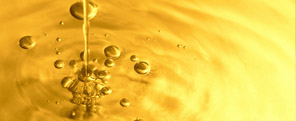 |
|||||||
|
Lubricants often fail to perform as specified when combined with other products, even in small concentrations. Issues with oil and grease compatibility most often manifest in problems including abnormal consistency and separation, leakage, insufficient bleed in contact zones, and premature aging. These factors eventually lead to compromises in machine component life, and substandard equipment performance. While there are advantages to staying consistent with one lubricant product per task, this often means that improvements in performance - or cost - can't be realized. When changing to a different oil, it is typically an option to discharge and change fluids completely. Grease, however, may be more difficult to purge. Therefore, when changing grease products, grease compatibility is critical. While the compatibility of oil products is largely related to the base and additives, grease compatibility is connected to the types of thickeners used. Technological advances have made grease compatibility a much more complicated proposition with the wide and complex array of thickeners used. Though manufacturers make grease compatibility charts available, information can be vague or contradictory. Grease compatibility problems may be immediately apparent in observable changes to the lubricant. Sometimes these changes are not immediately apparent, and become obvious only with diminished equipment performance. It is essential to prevent problems by specifying compatible products. Greases are considered to be compatible if the following conditions are met:
Problems associated with grease compatibility can be minimized by specifying greases with similar thickening profiles, and by making sure that new greases are appropriate for the operating environment. Consistent lubrication frequency, without over- lubricating, also promotes a smooth transition. When changing oil and grease lubricants, it is wise to work with an experienced supplier with extensive knowledge of compatibility issues and good testing resources. Ongoing process maintenance with continuous monitoring by the supplier is also a strategy that will help insure success. Acculube's Compatibility Chart For Commercial Greases
|

|
||||||
|
|||||||
|
|||||||
Accurate Lubricants & Metalworking Fluids, Inc.• 403 Homestead Avenue; Dayton, Ohio 45417 USA • Phone: 937-461-9906 Fax: 937-461-9917
|
|||||||
